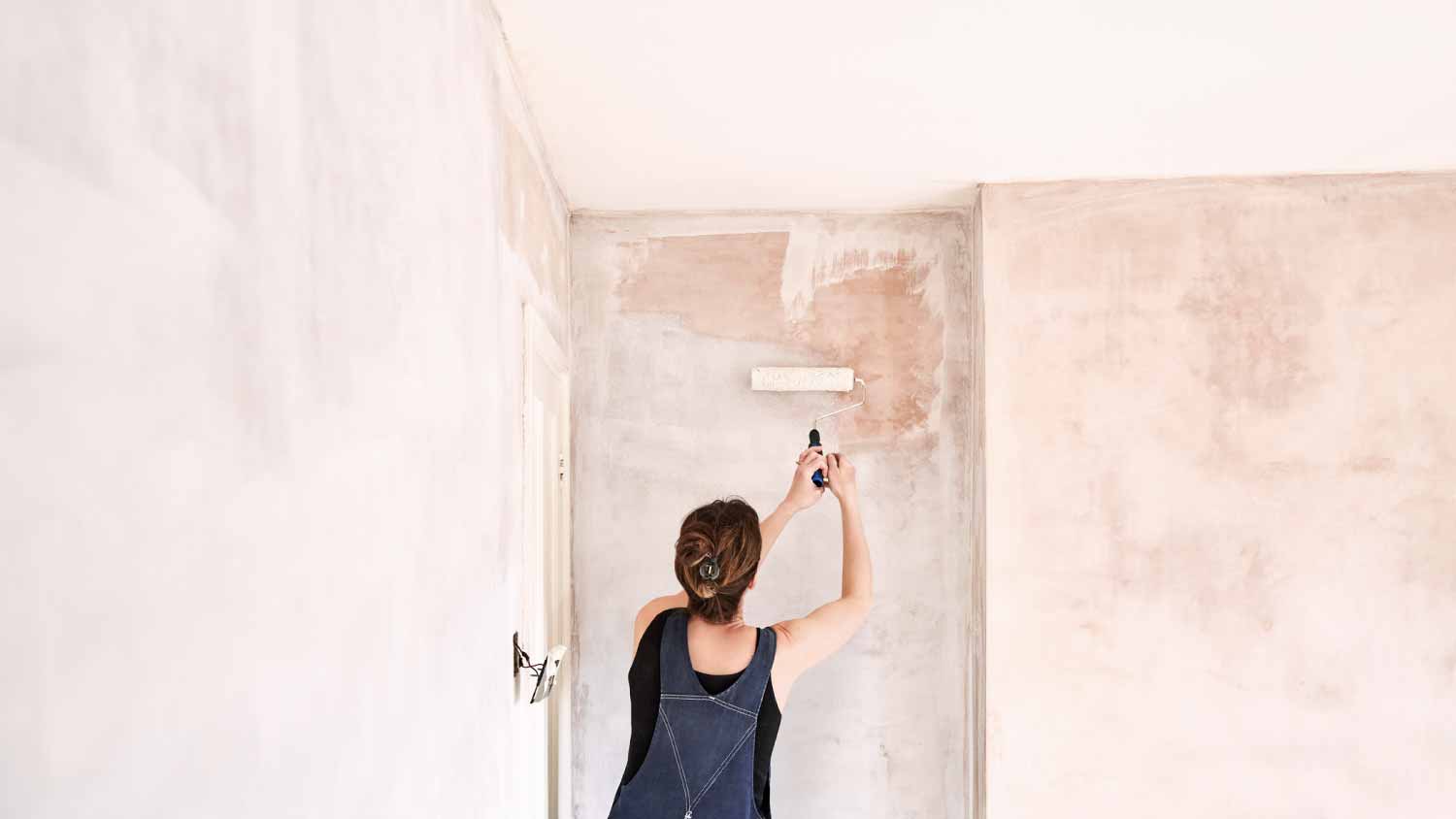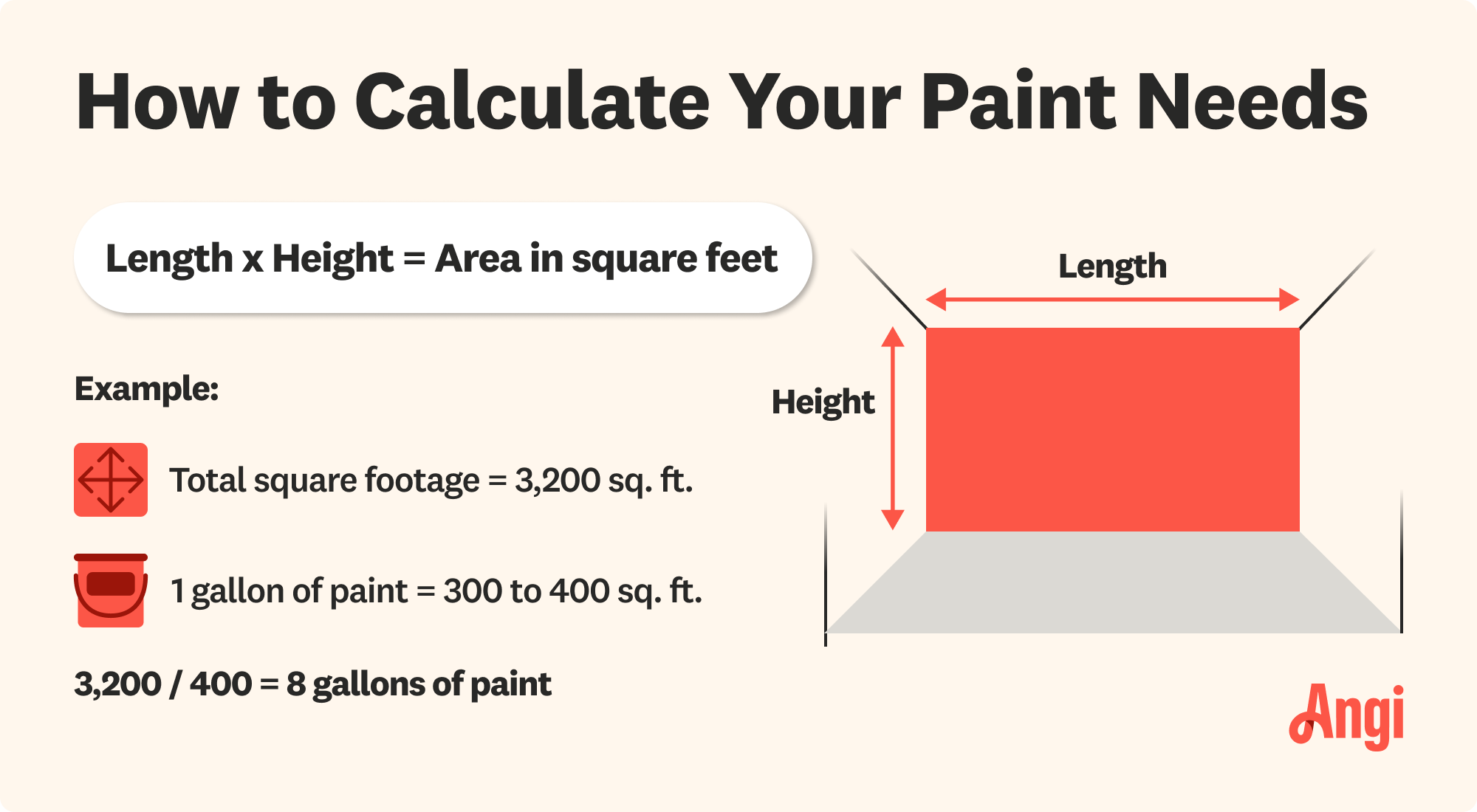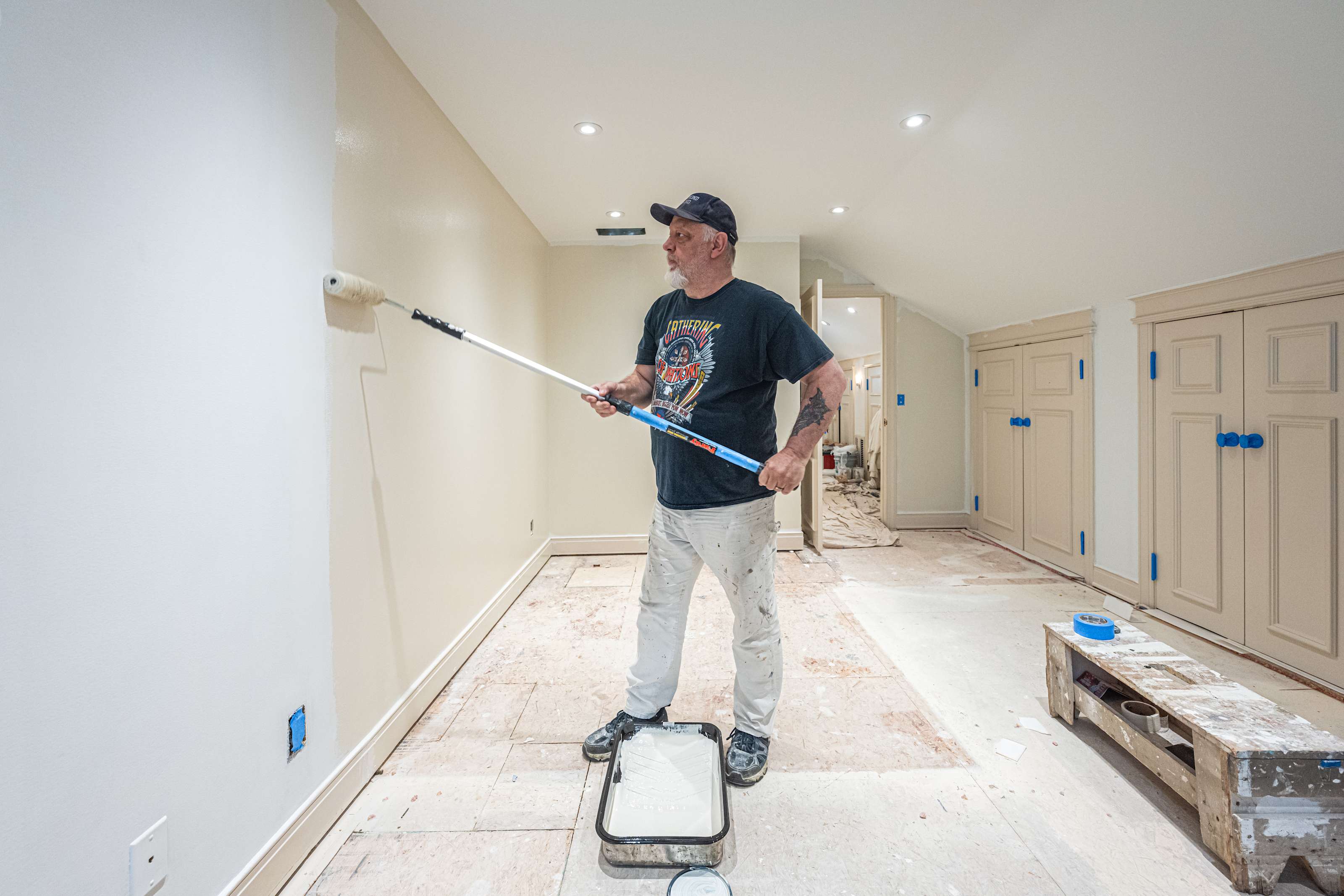
Limewash can add timeless texture to your living space. The cost to limewash interior walls depends on factors like surface area, materials, and prep work.
The cost to paint the interior of a house in Chicago, IL, averages $1,916, but that can range from $981 to $2,897. Your house painting pro will factor in square footage and type of paint for a personalized quote.


The cost to paint the interior of a house in Chicago increases in older homes that require additional prep, like repairing cracked plaster or sanding uneven walls, which can add $0.50 to $0.75 per square foot before painting begins.
Tall ceilings, tight stairwells, and ornate trim often require ladders or scaffolding, increasing labor costs to $4 to $8 per square foot in complex areas.
Chicago’s humid summers and cold winters can slow drying, leading to longer labor hours and higher material use, which can increase costs by 10% to 20%.
Homeowners in Chicago, Illinois, should budget carefully for an interior painting project. Interior painting in Chicago costs an average of $1,916, with most homeowners spending between $981 and $2,897. Chicago’s mix of vintage greystones, historic walk-ups, and newer condos often requires extra prep work, from repairing old plaster to tackling tall ceilings or tight stairwells. Seasonal weather also plays a role—cold winters and humid summers can affect paint performance. Below is a breakdown of the factors that drive interior painting costs in Chicago.
Understanding interior painting cost factors in Chicago, Illinois, helps you see where your budget goes. Home size, how much paint you need, surface prep, ceiling height, and unique architectural details all influence project complexity and overall pricing.

Across the country, the average cost to paint the interior of a house is $2.75 per square foot. If you include walls, trim, and ceilings, the cost per square foot is $4.70. To get the most accurate quote, have your square footage ready when speaking with a pro. For reference, an average room is 10-by-12 feet.
If you’re embarking on a whole-house interior painting project, check out the cost to paint a home interior by square footage, ranging from $2 to $6 per square foot:
| Home Square Footage | Average Painting Cost |
|---|---|
| 500 | $1,000–$3,000 |
| 800 | $1,600–$4,800 |
| 1,000 | $2,000–$6,000 |
| 1,200 | $2,400–$7,200 |
| 2,300 | $4,600–$13,800 |
| 2,500 | $5,000–$15,000 |
| 3,000 | $6,000–$18,000 |
While browsing the paint aisle or speaking with your pro, you’ll probably notice that paint costs $15 to $40 per gallon, depending on the brand and paint finish. If you have your heart set on a specific brand or type of paint, it can quickly raise the price. Long-lasting, high-gloss, and stain-blocking or mold-resistant paint will cost more and can push up your material costs.
The average home needs six gallons of paint per coat, excluding primer, so keep that in mind before filling up your cart.
| Paint Type | Average Cost per Gallon |
|---|---|
| Primers | $15–$35 |
| Flat paint | $20–$45 |
| Semi-gloss interior paint | $30–$60 |
| High-gloss enamel paint | $35–$75 |
| VOC-free paint | $40–$85 |
Oil-based paints contain higher volatile organic compounds (VOCs) than latex paints. To limit your exposure to VOCs while painting indoors, keep the area well-ventilated, wear respiratory protection, and avoid the painted area for at least 72 hours once finished.
Painting costs vary for different surfaces. Whether you're planning to refresh your walls, revive your ceilings, or give your trim a new lease on life, knowing the average expenses per surface type can help you budget effectively. In addition to walls and ceilings, you may also choose to paint baseboards and trim or paint an accent wall.
Adding an accent wall increases your budget by 20% to 30% to cover the cost of additional paint and materials. Choosing to add an accent wall will also require additional taping and drying time, so the cost to paint an accent wall will sit higher than a wall that matches the others in your home.
| Surface | Average Painting Cost |
|---|---|
| Baseboard and trim | $2–4 per linear foot |
| Hard-to-reach areas | $4–8 per sq. ft. |
| Smooth ceiling | $2–4 per sq. ft. |
| Walls | $1.50–3.50 per sq. ft. |
| Accent walls | $3–$8 per sq. ft. |
There are a few extra considerations to keep in mind when budgeting for interior painting, most of which focus on the existing features in your home.
If the interior of your home features unique architectural designs such as archways or columns, painting these will affect the cost. Due to the complexity of the areas, the increase in cost is labor-focused, as it takes greater attention to detail to make them shine.
Another important thing to consider is your ceiling height. Walls under standard 8-foot ceilings will be the most affordable to paint, and they fall on the lower end of the cost to paint a ceiling range. Taller walls, especially those under cathedral ceilings, will often require scaffolding and additional safety equipment to paint. These can drive up your labor costs even beyond what the additional coverage will add.
If a wall requires sanding and patching, the cost for wall prep is between $0.50 and $0.75 per square foot. This prep work is vital for a smooth finish on your wall, so a pro can apply paint flawlessly.
Some paint contractors bundle the prep work into their hourly or per-square-foot charges. If a room requires drywall fixes before the paint can glide on, drywall repair costs can add an average of $600 to your budget, depending on the severity.
You may need to use a primer prior to painting your walls, especially if you’re painting over a dark shade with a light shade. Paint primer helps the paint adhere more effectively, resulting in longer-lasting paint jobs and reducing how often you need to paint your home. Primer costs $10 per quart and covers 100 square feet with a single coat. Depending on your walls, you might need multiple coats of primer.
Adding textured walls to create a richer look can hide paint flaws and add some depth to your space, but prepare to increase your painting budget by up to 50% for this premium technique. Textured walls can require double the amount of paint as a smooth wall. Before hiring a professional painter, ensure that they offer this specialized service.
Removing wallpaper costs $3 per square foot. In a 12-by-12-foot room, expect to pay $535 to tear down wallpaper.
Expect to pay between $1 and $2 per square foot to de-pop a popcorn ceiling. Once your professional removes your popcorn ceiling, extra costs for texture, painting, or other refinishing options will add to the final total. Contact a popcorn ceiling removal pro near you for assistance.
Hiring a painting pro in Chicago means factoring in labor rates, essential prep work, repairs, and add-ons. Seasonal timing also matters—Chicago’s mild spring and fall often offer the best conditions and the most efficient project timelines.
Professional painters include the cost of labor in the total estimate, which often accounts for 75% to 95% of your total cost. In Chicago, labor rates tend to run higher due to demand, older housing stock, and the extra prep vintage homes often require. Professional interior painters in Chicago deliver smoother results, but you can still reduce labor hours by patching holes, cleaning surfaces, and moving furniture so the crew can start painting right away.
While you’re budgeting for an interior refresh, you might want to consider the following add-on services to maximize the impact and increase home value even further.
Cost to replace light fixtures: $150 to $1,000
Cost to install crown molding: $600 to $2,100
Cost to refinish wood flooring: $1,100 to $2,700
Cost to replace interior doors: $360 to $1,200
Cost to replace windows: $3,400 to $11,700
Cost to replace kitchen cabinets: $2,000 to $11,000
The best time to paint in Chicago is during spring and early fall, when temperatures and humidity are more stable. Chicago’s humid summers can slow drying times, while freezing winters make ventilation difficult. Scheduling during mild weather helps crews work efficiently, reduces the need for specialty paint formulas, and can even lower overall project costs.
A fresh interior paint job in Chicago can deliver a strong return on investment (ROI)—industry data suggest an average ROI of 107% for interior projects.For city homes, this boost can improve aesthetic appeal, increase functionality of living spaces, and enhance move-in readiness. Addressing scuffs, outdated colors, and wear signals to buyers that the property is well-maintained, which supports both perceived and actual value.
Home is the most important place on earth, which is why Angi has helped more than 150 million homeowners transform their houses into homes they adore. To help homeowners with their next project, Angi provides readers with the most accurate cost data and upholds strict editorial standards. We’ve surveyed thousands of real Angi customers about their project costs to develop the pricing data you see, so you can make the best decisions for you and your home. We pair this data with research from reputable sources, including the U.S. Bureau of Labor Statistics, academic journals, market studies, and interviews with industry experts—all to ensure our prices reflect real-world projects.
Want to help us improve our cost data? Send us a recent project quote to [email protected]. Quotes and personal information will not be shared publicly.
From average costs to expert advice, get all the answers you need to get your job done.

Limewash can add timeless texture to your living space. The cost to limewash interior walls depends on factors like surface area, materials, and prep work.

How much does it cost to paint a room? Learn what you’ll pay to give your space a makeover, depending on room size, paint type, the pro you hire, and more.

The German schmear technique can revitalize the look of your brickwork. Learn what German schmear is and what you should know before you get started.

Are you asking yourself, “What is limewash paint?” Learn more about this timeless paint, sometimes called whitewash, before using it in your next project.

Wondering how much you should pay a painter upfront? Check out this guide to learn when and how much you can expect to pay house painters for services.

Looking to refresh your living space but overwhelmed with the color options? Check out these popular paint colors to for some inspiration.